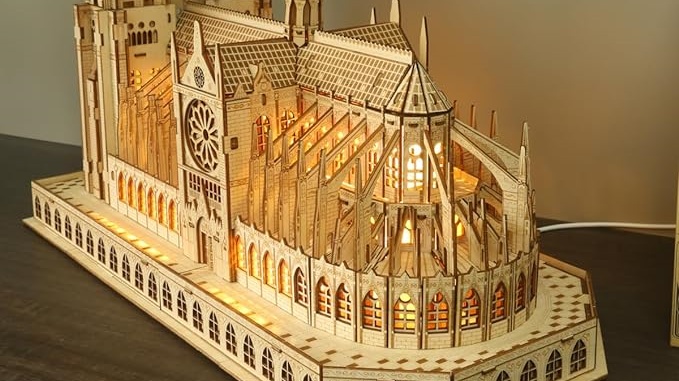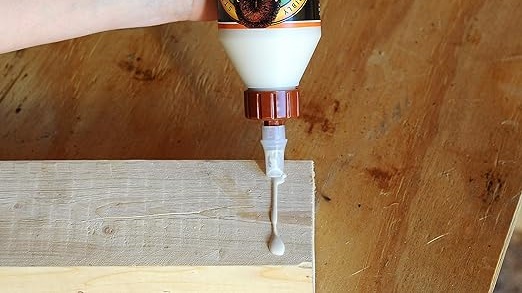
How To Add Storylines To Your Wooden Jigsaw Puzzle: A Creative Guide
Imagine a wooden jigsaw puzzle where each piece is more than a part of an image; it’s a chapter in a captivating story waiting to

The moment you find your cherished wooden cube puzzle in pieces, not by design but due to damage, can be disheartening.
But don’t fret! Repairing your puzzle is not only possible; it’s a chance to deepen your connection with this intriguing brainteaser.
This comprehensive guide will walk you through the process of bringing your puzzle back to its former glory, ensuring that each piece fits perfectly once again.
Before diving into repairs, it’s crucial to understand the anatomy of your wooden cube puzzle. These puzzles are masterpieces of craftsmanship, where each piece plays a critical role in the puzzle’s integrity.
By familiarizing yourself with the puzzle’s design and recognizing the common issues that can arise, you’ll be better prepared to tackle any repairs head-on.

This foundational knowledge is not just about fixing; it’s about appreciating the complexity and beauty of your puzzle, understanding its vulnerabilities, and knowing how to address them efficiently.
Every wooden cube puzzle consists of interlocking pieces that create a solid cube when correctly assembled. These pieces can vary in shape and size, but each is essential for the puzzle’s completion.
Understanding how these pieces fit together is crucial, as it allows you to identify which piece goes where, making the repair process much more straightforward.
It’s like being a detective, piecing together clues to restore the full picture, or in this case, your beloved puzzle.
Familiarize yourself with the unique shapes and how they interlock, as this knowledge will be invaluable when you’re trying to fit a repaired piece back into the puzzle.
Puzzles can suffer from various damages, including chips, cracks, and splits. Identifying the type of damage is the first step towards a successful repair.
Chips are small pieces that break off, often found at the puzzle’s corners or edges.
Cracks are hairline fractures that can run deep into the wood, while splits are complete separations of the wood, often along the grain.
Each type of damage requires a slightly different approach to repair, emphasizing the importance of a keen eye in diagnosing your puzzle’s specific needs.
For example, a crack might simply need glue, whereas a chip could require filling and coloring to match the original wood.
For most repairs, you’ll need wood glue, sandpaper, clamps, and possibly wood filler.
Having the right tools at hand makes the repair process smoother and more efficient. Wood glue is essential for rejoining broken pieces, while sandpaper helps smooth out rough edges and surfaces.

Clamps are necessary to hold pieces together securely as the glue dries, ensuring a tight bond. In some cases, wood filler may be needed to fill in gaps or missing chips, making the puzzle appear whole again.
Selecting the right type of wood glue is crucial, as some are designed for interior use while others are waterproof, making them suitable for items that might be exposed to moisture.
With a clear understanding of your puzzle’s structure and the damage at hand, you’re ready to start the repair process. Here’s how to breathe new life into your wooden cube puzzle.
This section will guide you through each step of the repair process, from preparing the damaged pieces to applying the finishing touches.
By following these steps carefully, you can restore your puzzle to its original condition, making it hard to tell it was ever damaged.
The goal is not just to fix the puzzle, but to do so in a way that respects its original craftsmanship and beauty.
Start by cleaning the damaged areas. Remove any debris or old glue that could hinder the repair. This preparation is essential for ensuring a clean, strong bond between the pieces.
Use a soft brush or a cloth to gently clean around the damaged areas, ensuring that all surfaces are free from dust and old adhesive.
If you’re dealing with a split or crack, it’s particularly important to ensure the interior of the damage is clean to allow for effective gluing.
This step sets the stage for a successful repair by ensuring that the puzzle pieces can be seamlessly rejoined.
A clean, well-prepared surface is key to ensuring that the glue adheres properly and that the repair holds over time.
Apply wood glue sparingly to the damaged areas, then join the pieces together.
Use clamps to hold the pieces in place as the glue dries, ensuring a tight fit. It’s important to apply the glue precisely, using just enough to bond the pieces without excess spilling out.
Once applied, carefully align the pieces as accurately as possible before applying the clamps. This precision ensures that the puzzle will fit together perfectly once the repair is complete.
Allow the glue to dry according to the manufacturer’s instructions, typically for several hours, to ensure a strong bond.
The right amount of glue and proper clamping are crucial for a repair that is both strong and aesthetically pleasing.
Once the glue has dried, gently sand the repaired areas to remove any excess glue and smooth out the surface.
If the color or finish has been affected, you may also need to apply a matching stain or finish to the repaired areas.
Sanding should be done with fine-grit sandpaper to avoid damaging the wood further. The goal is to make the repaired area blend seamlessly with the rest of the puzzle.
If necessary, applying a matching stain or varnish can restore the puzzle’s aesthetic, making the repair virtually invisible.
The finishing touches are what will make your repair work stand out, ensuring that the puzzle looks as good as new.
Prevention is always better than cure. Here are some tips to keep your wooden cube puzzle in top shape, reducing the likelihood of future damage. Maintaining your puzzle is about more than just avoiding repairs; it’s about preserving the enjoyment and challenge it brings.
By following these maintenance tips, you can ensure that your puzzle remains a beloved part of your collection for years to come.
Proper care and handling can significantly extend the life of your puzzle, allowing you to enjoy it for many years without the need for further repairs.
Handle your puzzle with care, and store it in a place where it’s less likely to be knocked over or stressed. Proper storage can significantly extend the life of your puzzle.
Avoid placing it in high-traffic areas where it could be accidentally knocked down or subjected to undue pressure. Instead, find a safe, stable location where it can be displayed or stored securely.
Additionally, consider using a storage box or case to protect the puzzle from dust and physical damage, especially if it’s not being used regularly.
The way you handle and store your puzzle can greatly influence its longevity, so it’s worth taking the time to do it right.
Regularly clean your puzzle to prevent dust buildup, and inspect it for any signs of wear or damage. Early detection can make repairs easier and prevent further damage.
Use a soft, dry cloth to gently wipe down the puzzle, removing dust and debris that could accumulate in the crevices.
Periodic inspections can help you catch any minor issues before they become major problems, ensuring that your puzzle remains in good condition.
This proactive approach to maintenance can save you time and effort in the long run, keeping your puzzle looking its best.
Keep your puzzle away from extreme temperatures, humidity, and direct sunlight. These elements can warp or crack wood, leading to more significant issues over time.

Wood is a natural material that can expand or contract with changes in temperature and humidity. Keeping your puzzle in a stable environment helps preserve its shape and integrity.
Likewise, prolonged exposure to sunlight can fade the wood’s color and weaken its structure, so it’s best to place your puzzle in a location where it’s protected from direct sunlight.
By being mindful of these common hazards, you can help ensure that your puzzle remains in excellent condition for years to come.
Restoring your wooden cube puzzle is not just about repair; it’s about reclaiming a piece of joy and challenge.
With patience and the right approach, you can fix almost any damage, ensuring your puzzle continues to provide entertainment and mental stimulation for years to come.
Remember, the key to a long-lasting puzzle is not just in how you fix it, but in how you care for it every day.
Through regular maintenance and careful handling, you can preserve the beauty and integrity of your puzzle, making it a treasured part of your collection for many years.


Imagine a wooden jigsaw puzzle where each piece is more than a part of an image; it’s a chapter in a captivating story waiting to

When choosing the right puzzle box(wooden puzzle boxes or paper one) for your toddler, it’s essential to consider the materials’ properties and how they align

Embark on a journey to unravel the nuanced distinctions between two beloved genres of puzzles: plain wooden puzzles and 3d wooden puzzles. In this comprehensive

Imagine your wooden jigsaw puzzle not just as a piece to be solved but as an interactive journey that engages all your senses. This guide

Imagine a wooden jigsaw puzzle where each piece is more than a part of an image; it’s a chapter in a captivating story waiting to

When choosing the right puzzle box(wooden puzzle boxes or paper one) for your toddler, it’s essential to consider the materials’ properties and how they align

Embark on a journey to unravel the nuanced distinctions between two beloved genres of puzzles: plain wooden puzzles and 3d wooden puzzles. In this comprehensive

Imagine your wooden jigsaw puzzle not just as a piece to be solved but as an interactive journey that engages all your senses. This guide
Copyright © 2024 woodcraft3dpuzzles. All Rights Reserved.